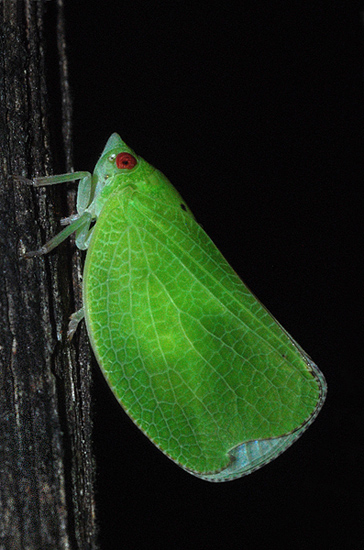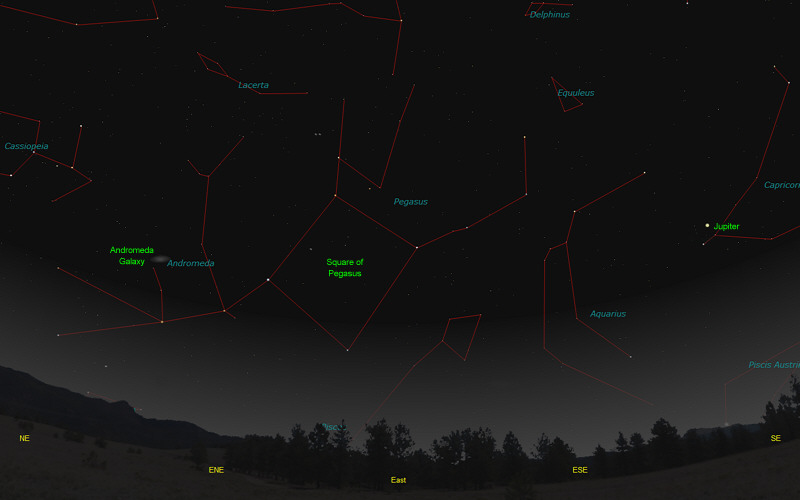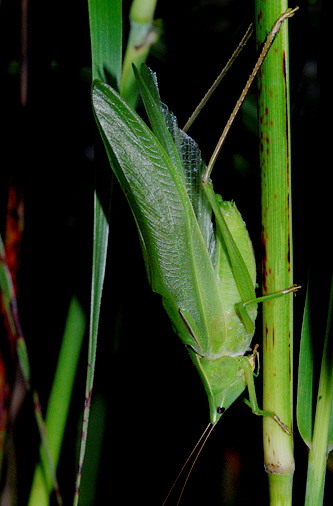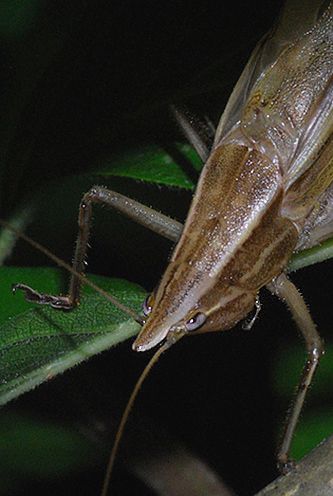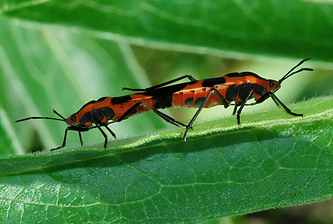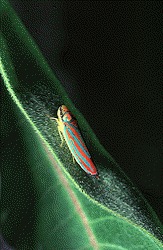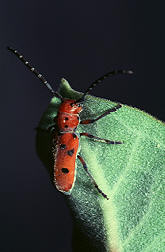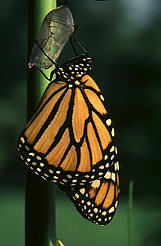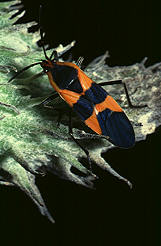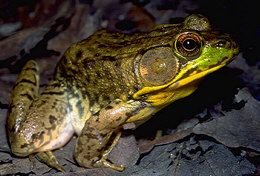The purpose of this feature is to give scout leaders, educators and naturalists an idea of some of the natural events coming up each month. We will try to cover a variety of natural events ranging from sky events to calling periods of amphibians, bird and mammal watching tips, prominent wildflowers and anything else that comes to mind. We will also note prominent constellations appearing over the eastern horizon at mid-evening each month for our area for those who would like to learn the constellations. If you have suggestions for other types of natural information you would like to see added to this calendar, let us know! Note: You can click on the hyperlinks to learn more about some of the featured items. To return to the Calendar, hit the "back" button on your browser, NOT the "back" button on the web page. All charts are available in a "printer friendly" mode, with black stars on a white background. Left clicking on each chart will take you to a printable black and white image. Please note that images on these pages are meant to be displayed at 100%. If your browser zooms into a higher magnification than that, the images may lose quality.
Notes and Images From July 2009
I encountered this Conehead Planthopper, Acanalonia conica, while searching a tangle of Fox Grape vines in our front yard. My headlamp's beam lit up something very small and bright green creeping along one of the vines. On framing it in my macro lens, I was struck by how much the body and wings appeared like a small leaflet, even down to the veins in the wings. The planthopper was only about a quarter of an inch long, so the image at right is about 40 times life-size. The mottling of light and dark green areas across the wings was not created by the camera flash - it is part of the camouflage pattern of the wings. The elaborate patterning and shading is a beautiful example of mimicry. This planthopper feeds on a wide variety of plants, including Osage Orange, Basswood, Goldenrod, Ragweed and milkweeds. In late summer and early fall, females lay their eggs in woody stems, including the woody stems of grapes. The current August issue of National Geographic has a wonderful article on mimicry, which is accessible online at http://ngm.nationalgeographic.com/2009/08/mimicry/angier-text. The site also includes interactive elements. For more on summer insects, including some recorded calls, see the "Insects" section below.
Sky Events for August 2009: The Perseid Meteor Shower peaks in the morning hours of August 12th. A waning gibbous moon will tend to wash out some of the meteors this year. Evening Sky: Saturn is only about 15 degrees above the western horizon at dusk at the beginning of the month. It rapidly disappears into the twilight glow as the month progresses. Jupiter rises at dusk in August and is in great position to observe telescopically later in the evening. Even 7x35 binoculars will usually show a few of the four brightest moons discovered by Galileo. Steadying the binoculars against a tree or other solid object will help you see them. Morning Sky: Mars rises around 1:30am at midmonth in Taurus. Venus, shining brightly at -4 magnitude, rises around 3:15am at midmonth. All times noted in the Sky Events are for Franklin, Tennessee and are Central Daylight Time. These times should be pretty close anywhere in the mid-state area.
Constellations: The views below show the sky looking east at 10:00pm CDT on August 15th. The first view shows the sky with the constellations outlined and names depicted. Star and planet names are in green. Constellation names are in blue. The second view shows the same scene without labels. New constellations this months are Pegasus, the Flying Horse, Andromeda, Princess Andromeda, Triangulum, the Triangle, Pisces, the Fishes, and Aquarius, the Water Bearer. Note bright Jupiter low in the southeast in Capricornus.
Find the "Square of Pegasus" and work your way outward from it to the constellations around it. See if you can pick out the faint glow of the Andromeda Galaxy, over 2 million light years away! When you look at this galaxy you're seeing light that began its journey to us in the Pleistocene epoch. To get the best look, wait until the galaxy climbs high in the sky. The Andromeda Galaxy was first shown on star charts prepared in 905AD by the Persian astronomer, Al Sufi, and was referred to as the "Little Cloud." That well describes its appearance to the naked eye. Binoculars will greatly improve your view, as will driving out of the city and finding darker skies. Simon Marius, in 1610, was among the first to observe the Andromeda Galaxy through a small telescope. He compared its soft glow to "the light of a candle shining through horn." In dark skies, those using small telescopes may pick out the small satellite galaxies M32 (above and left of the nucleus of M31 in the above image) and NGC 205 (below). If you have success with the Andromeda Galaxy, you might want to try a binocular tour of some of the bright Messier globular clusters that are so prominent this time of year. You will want a dark country sky to do this, and you will need a star atlas (see references below).
On Learning the Constellations: We advise learning a few constellations each month, and then following them through the seasons. Once you associate a particular constellation coming over the eastern horizon at a certain time of year, you may start thinking about it like an old friend, looking forward to its arrival each season. The stars in the evening scene above, for instance, will always be in the same place relative to the horizon at the same time and date each August. Of course, the planets do move slowly through the constellations, but with practice you will learn to identify them from their appearance. In particular, learn the brightest stars for they will guide you to the fainter stars. Once you can locate the more prominent constellations, you can "branch out" to other constellations around them. It may take you a little while to get a sense of scale, to translate what you see on the computer screen or what you see on the page of a book to what you see in the sky. Look for patterns, like the stars that make up the "Square of Pegasus." The earth's rotation causes the constellations to appear to
move across the sky just as the sun and the moon appear to do. If you go
outside earlier than the time shown on the charts, the constellations will be
lower to the eastern horizon. If you observe later, they will have climbed
higher. As each season progresses, the earth's motion around the sun
causes the constellations to appear a little farther towards the west each
night for any given time of night. If you want to see where the
constellations in the above figures will be on September 15th at 10:00pm CDT, you
can stay up till 12:00pm CDT on August 15th and get a preview. The westward
motion of the constellations is equivalent to two hours per month. Sky Publishing has just come out with a beautiful and compact star atlas, Sky & Telescope's Pocket Star Atlas. It is destined to become a classic, and is a joy to use at the telescope. A good book to learn the constellations is Patterns in the Sky, by Hewitt-White. You may also want to check out at H. A. Rey's classic, The Stars, A New Way to See Them. For skywatching tips, an inexpensive good guide is Secrets of Stargazing, by Becky Ramotowski. A good general reference book on astronomy is the Peterson
Field Guide,
A Field Guide to the Stars and Planets, by Pasachoff.
The book retails for around $14.00. Starry Night has several software programs for learning the night sky. Visit the Starry Night web site at www.starrynight.com for details.
Insects: Late summer is the time of the great insect orchestras. Cicadas are heard during the day and at dusk, and Common True Katydids evoke memories of past summer evenings with their familiar music. Fork-tailed Bush Katydids deliver a short upward-slurred note with an inflection that sounds like a match being struck. And, at this time of year, it would be hard to drive a back country road and not hear the raspy song of a conehead.
Two common species of coneheads in Tennessee are the Robust Conehead and the Nebraska Conehead. Both species can be either green or a brown in color. Both usually call from weedy vegetation with their head down, as shown in the image at right, ready to drop into the ground cover if alarmed. Coneheads are in the katydid family (Tettigoniidae), which also includes the True Katydids, the Meadow Katydids, the Shieldback Katydids and the False Katydids. The genus is Neoconocephalus. The easiest way to locate coneheads is by listening for their calls. Just drive a few back roads that pass by weedy fields at dusk or later and you should hear them. The Robust Conehead is the larger of the two species and is between two and three inches long. It has a very long, rasping call on one pitch. Like a bad rock musician, it seems to try to make up in sheer volume what its song lacks in complexity. As you drive by you can sometimes hear the call doppler-shifting downward as you drive by. The call has a peak frequency of around 8 kHz, and you can listen to one I recorded on July 30th by clicking here. There are two cuts - the first cut records the sound as you might hear it at a distance, and includes Common True Katydids in the background. The second cut records the sound as you might hear it if one is calling right beside the road. The name Nebraska Conehead is a little misleading, as its range also includes a wide area of the eastern United States that includes Tennessee. A little smaller than the Robust Conehead, it measures between 1-3/4 inches to 2-1/4 inches in length. The call of the Nebraska Conehead is also a raspy note on one pitch, but the length of each call last only between 1-1/2 to 2 seconds, with a pause of about one second in between calls. Its call peaks around 10 kHz. To listen to a recording of a Nebraska Conehead that we made last summer, click here. Seen close up, the eyes of both species are quite interesting. If you happen across a conehead that is not calling, look carefully at the underside of the cone and observe how it is marked. These markings are a useful way to distinguish between species. See the reference at the bottom of this section for help in identification.
By day, some of the more colorful insects can be found in
patches of milkweed.
Monarch butterflies lay their tiny cream-colored
eggs on the milkweed leaves
and you can usually find a Monarch caterpillar munching on the foliage. If you’re lucky, you might even find the
beautiful, jewel-like chrysalis of the Monarch nearby. To see a complete image sequence of a Monarch caterpillar forming it's chrysalis
and emerging as a butterfly,
click
here. Scarlet and Green Leafhoppers, Large
Milkweed Bugs and Red Milkweed Beetles all add their brilliant warning colors
to the scene.
To learn more about insects and insect songs we recommend: The Songs of Insects, by Lang Elliott & Will Hershberger (Houghton Mifflin) - Beautifully written and including many spectacular images, this book includes an audio CD and detailed range maps. It was a real bargain for $19.95, and you can now get it from Amazon for less than $14.00.
Amphibians:
This has been a cool summer, so listen for Southern Leopard Frogs to begin their fall calling early. Listen also for Cope's Gray Treefrogs, Gray Treefrogs, Bird-Voiced Treefrogs, Green Treefrogs and Barking Treefrogs. Northern Cricket Frogs and Southern Cricket Frogs are still calling, as are American Bullfrogs and Green Frogs. Spring Peepers have a much higher, shorter call this time of year. On cooler nights listen for American Toads. After heavy rains listen for the high, insect-like call of the Eastern Narrow-mouthed Toad and the strange-sounding Eastern Spadefoot.
Archives (Remember to use the back button on your browser, NOT the back button on the web page!) Natural Calendar February 2009 Natural Calendar December 2008 Natural Calendar November 2008 Natural Calendar September 2008 Natural Calendar February 2008 Natural Calendar December 2007 Natural Calendar November 2007 Natural Calendar September 2007 Natural Calendar February 2007 Natural Calendar December 2006 Natural Calendar November 2006 Natural Calendar September 2006 Natural Calendar February 2006
Natural Calendar
December 2005
Natural Calendar
November 2005
Natural Calendar
September 2005
Natural Calendar
February 2005
Natural Calendar
December 2004
Natural Calendar
November 2004
Natural Calendar
September 2004
Natural Calendar
February 2004
Natural Calendar
December 2003
Natural Calendar
November 2003
Natural Calendar
September 2003 Natural Calendar February 2003 Natural Calendar December 2002 Natural Calendar November 2002 Nature Notes Archives: Nature Notes was a page we published in 2001 and 2002 containing our observations about everything from the northern lights display of November 2001 to frog and salamander egg masses. Night scenes prepared with The Sky Professional from Software Bisque All images and recordings © 2009 Leaps |
||||||||||||||||||||||
